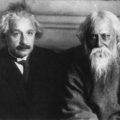Guru Gobind Singh Jayanti
Guru Gobind Singh Jayanti is celebrated on the Birthday of tenth Sikh Guru, Guru Gobind Singh, also spelled as Guru Govind Singh. This day holds special significance for the Khalsa Panth. At his birthplace, his birth anniversary is celebrated with great reverence.
Guru Gobind Singh Ji was the tenth Guru of the Sikhs. In the Patna city of Bihar, he was born on 22 December in 1666. He became a Guru on 11 November 1675 after the death of his father, Guru Tegh Bahadur. He was a great warrior, poet, devotee, and a spiritual leader. He founded the Khalsa Panth on the occasion of Baisakhi in 1699, which is considered to be the most important event in the history of Sikhs.
Guru Gobind Singh completed the Guru Granth Sahib, the sacred text of the Sikhs, and embellished them as a Guru. The Bichitra drama is considered as his autobiography and it is the most important source of information about his life. It is a part of the Dasam text. The Dasam Granth is the name of a compilation of the works of Guru Gobind Singh.
He fought 14 wars with the Mughals. He sacrificed the entire family for religion, for which he is also called ‘Sarabansdani’. Guru Gobind is also known by many names, surnames, and titles such as Kalgidhar, Dashmesh, Bajanwale, among the masses.
Guru Gobind Singh was unique in the sacrificial tradition of the world, he himself was a great writer, original thinker and also knowledge of many languages. He himself composed many texts. He was the patron of scholars. There were 52 poets and writers present in his court, that is why he was also called ‘Sant Sipahi’. He was a unique confluence of devotion and power.
Guru Gobind Singh Jayanti Celebration
Guru Gobind Singh Jayanti is a day to remember Guru ji and his teachings. Guru Gobind Singh Jayanti is the day to pay homage to all gurus who sacrificed their lives for the sake of India and its people. This day is celebrated all over the world by Hindu and Sikh people. People gather in gurudwaras in large numbers and show reverence towards Guru ji.
Establishment of Khalsa Panth:
Guru Gobind Singh Ji wanted that a group should be formed to protect the society from anti-social elements. He formed a group on 30 March 1699 in Anandpur, Punjab with his followers, named the Khalsa Panth. Actually, such people were kept in this group who do not back down from giving life to the country. When asks for sacrifice, they must be ready. Word ‘Khalsa’ is a Persian word, which means ‘holy’. Guru Gobind Singh Ji said that this group is being formed with a sacred ideology, hence ‘Khalsa Panth’ name was the most accurate. Along with forming this group, Guru Gobind Singh Ji also gave a slogan, ‘Vahe Guru Ji ka Khalsa, Vahe Guru Ji ki Fateh’.
The Khalsa Panth of Guru Gobind Singh is still considered to be the most prominent sacred sect of Sikhism, with the young boy joining it essentially wearing a hair, comb, kacha, kadha and kirpan. People of Sikhism, by uttering the slogan ‘Vahe Guru Ji ka Khalsa, Vahe Guru Ji ki Fateh’, still ready to do everything for Vahe Guru.
Battle of Chamkaur:
On 22 December 1704, a historic war was fought between the Sikhs and the Mughals at a place called Chamkaur, on the banks of the Sirsa River, which is famous in history as the “Battle of Chamkaur”. In this war, 40 Sikhs, led by the tenth Sikh Guru Govind Singh Ji, faced 10 lakh Mughal soldiers led by Wazir Khan. Wazir Khan wanted to capture Guru Gobind Singh Ji alive or dead in any case because Guru Govind Singh was not accepting the subjugation of the Mughals.
Despite Aurangzeb’s millions of efforts, 40 Sikhs including Guru Gobind Singh’s two sons did not allow Wazir Khan to succeed in his plans with Guruji’s blessings and his valor, not even 10 lakh Mughal soldiers could catch Guru Gobind Singh Ji. This war is known in history for the valor of the Sikhs and their faith in their own religion.
Guru Gobind Singh Marriage:
Guru Gobind Singh Ji was married thrice. The first marriage was with Mata Jeeto at the Basantgarh salt place, 10 kilometers from Anandpur, on 21 June 1677. He has three sons from his first wife namely, Jujhar Singh, Zorawar Singh, Fateh Singh. The second marriage took place on 4 April 1684 in Anandpur with Mata Sundari. At that time, he was about 17 years old. From the second wife, a son named Ajit Singh was born. The third marriage took place on 15 April 1700 with Mata Sahib Kaur at the age of about 33 years. Gobind Ji did not have any children from Mata sahib, but the period of his time in the pages of history was very impressive.
Facts about Guru Gobind Singh Ji:
- The early part of Guru Gobind Singh’s childhood passed with his grandfather in Patna. A gurdwara has been constructed at his birthplace in Patna. The Takht is popularly known as Shri Harminder Sahib and Patna Sahib. From around the world, people come here to visit the birthplace of the Guru Gobind. This Gurudwara was built by the first Maharaja Ranjit Singh of the Sikh dynasty. It was first constructed in the 18th century.
- Guru Gobind Singh famous as the tenth and last Guru of Sikhism, was very knowledgeable, heroic, an icon of Daya Dharma. Guru Gobind Singh Ji, by establishing the Khalsa Panth, inspired the people of Sikh religion to take up arms to protect religion. Guru Gobind Singh Ji, who devoted his entire life to the world, wrote the chapter of sacrifice and sacrifice that became immortal in the history of the world.
- Guru Gobind Singh Ji wished that even after his death. one of his associates should remain in Nanded and keep the Guru’s anchor continuously. The ‘Hazur Sahib Sachkhand Gurdwara’ located in Nanded city of Maharashtra, the tenth and last Guru of the Sikhs, Govind Singh Ji breathed his last with his beloved horse Dilbag. It is said that this murder was done for religious and political reasons.
- Guru Gobind Singh is considered as a great freedom fighter and poet. In childhood, everyone used to call him affectionately as ‘Bala Pritam’, and his uncle used to call him as Govind by the grace of Govind.
- Govind Ji’s entire childhood was spent in Bihar. When father Tegh Bahadur Ji sacrificed his life to protect Hinduism in Delhi in 1675, then at the age of just nine, Govind Ji ascended the throne of Guru.


